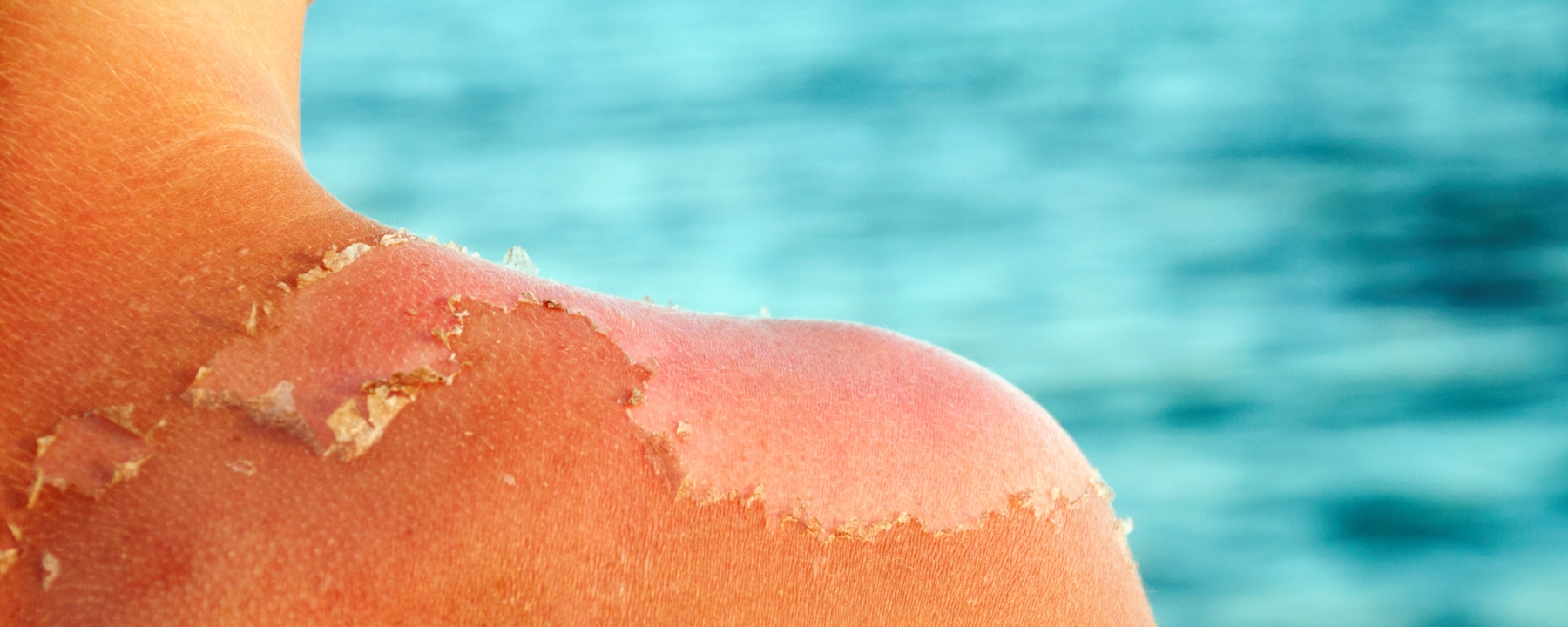
Sun protection
Best tips to protect yourself
Modern sunscreens are very effective in protecting against sunburn and other damages caused by UV rays. Proper application plus following some easy guidelines puts you on the safe side.
Our tips – The to-do list for a comprehensive sun protection approach. (The order does not indicate importance)
High Noon
Avoid being outdoors too long during the midday sun while on vacation. The sun is the strongest when it reaches its peak. Take a siesta and recharge your batteries. Use the UV index to know the expected values and the actual intensity of the current UV radiation. The Shadow Rule can also help you keep your skin safe: when the person’s shadow is long, the intensity of the UV rays is less. If the person’s shadow is shorter than the person is tall, the sun is stronger. This tip can be especially useful for children to indicate when the sun is very intense during the day. However, this doesn’t take into account other factors, such as how cloudy it is or the sun’s reflection on certain surfaces.
Find shade, don’t cast a shadow
Find shade and use it. Although shade is not entirely UV-free, UV radiation is less intense by as much as 50%. Because radiation is scattered, even in the shade, almost half of the UV radiation is still around. However, it should be taken into account that the strength of the reflection depends on the surface in question. The reflected portion of UV radiation is generally between 3–15%. However, snow can reflect up to 80–90% of UV rays. (Ref.: „2018, Turner and Parsis. Ultraviolet Radiation Albedo and Reflectance in Review: The Influence to Ultraviolet Exposure in Occupational Settings.“)
Maintaining your perspective
Open your eyes: Do not forget to protect your eyes. Always wear sunglasses to prevent cataracts and retinal damage. The eyes should be completely covered by the glasses and a brown or gray tint is ideal. Sunglasses with good protection are labeled with "UV-400", "100 percent UV" or have the "CE" mark.
Check out the Sun Protection Factor
The sun protection factor (SPF) of a sunscreen indicates how well it protects from sunburn. The maximum time spent in the sun is calculated by multiplying the length of time it takes to suffer a burn without sunscreen with the sun protection factor.Your skin’s natural sun protection refers to the time you can spend in the sun unprotected before you get sunburned. Depending on a person’s skin type, this can vary greatly. Remember, that sun protection is reduced when swimming, sweating and if sunscreen rubs off on towels and clothing.
We also love the sun. The colleagues from the Sun Care Competence Center in Grenzach on sun, sun protection and good mood.
Don’t skimp, splurge
Sunscreens: A lot helps a lot. Most people put too little sunscreen on their skin. It doesn’t help if you have SPF 50, but only use half of what you need. Consider all the areas of your body without sun protection.
Dive in, but please use sun protection
Before you get into the water, whether snorkeling or swimming, you should use sunscreen and/or wear clothes that protect you from UV radiation. Even under water, your skin is still getting hit by UV rays. After staying in the water for awhile, reapply sunscreen. Even when good sunscreens are water resistant, their protection looses a part of its effectiveness.
Clothes keep people healthy people
Wear clothes. Shirtless and shorts? Nope. You are better off when you wear dark clothes with thick fabric. They act like a sunscreen and protect you from the effects of harmful sun rays. So, even clothing can affect how well you are protected from the sun. UPF (UV Protection Factor) identifies the sun protection factor for textiles.
The UV standard 801 takes into consideration the particular requirements to which a sun protective textile is subjected during use so that consumers have a reliable UPF value. Factors include, for example, stretching by wearing, moisture from sweat and water, effects from care and washing of the textile. Since these factors can reduce the amount of time protection works and even completely lose it, this must be reflected in the UPF rating.
The method used to measure is based on the sun radiation intensity in Melbourne, Australia on the 1st of January of each year since this period marks the height of Australian summer. Also, the most sensitive skin type is used as reference.
If you wear a long sleeve shirt with UPF 20, the protected area can stay out in the sun about 20 times longer. Yet don’t ignore other sun protection measures, such as using the best broad spectrum sunscreen, just because you are wearing clothes.
Ask your pharmacist
If you are taking medications and are planning to hang out in the sun, ask your doctor or pharmacist about any potential side effects or interactions with the sun. It’s better to not use perfumes and deodorants when you are sunbathing. They can lead to skin pigmentation or sensitization.
On the road again
Will you be in the car for a long period of time or even drive longer distances every day? Then have good sunscreen ready to grasp in your car. Even if it feels like you are sitting inside, UVA rays can penetrate car windows and cause skin damage. Driving and sunscreen – a good combination.
Kids need extra protection
Our children need extra protection from the sun. Kids have a much more sensitive skin and their natural protection is not as fully developed as with adults. Everyone has heard screaming and crying children when their moms or dads are putting sunscreen on them. Shift their perceptions and be role models. If you protect yourself from the sun by using sunscreen, your children will learn and follow your role-modeling. Hopefully.

